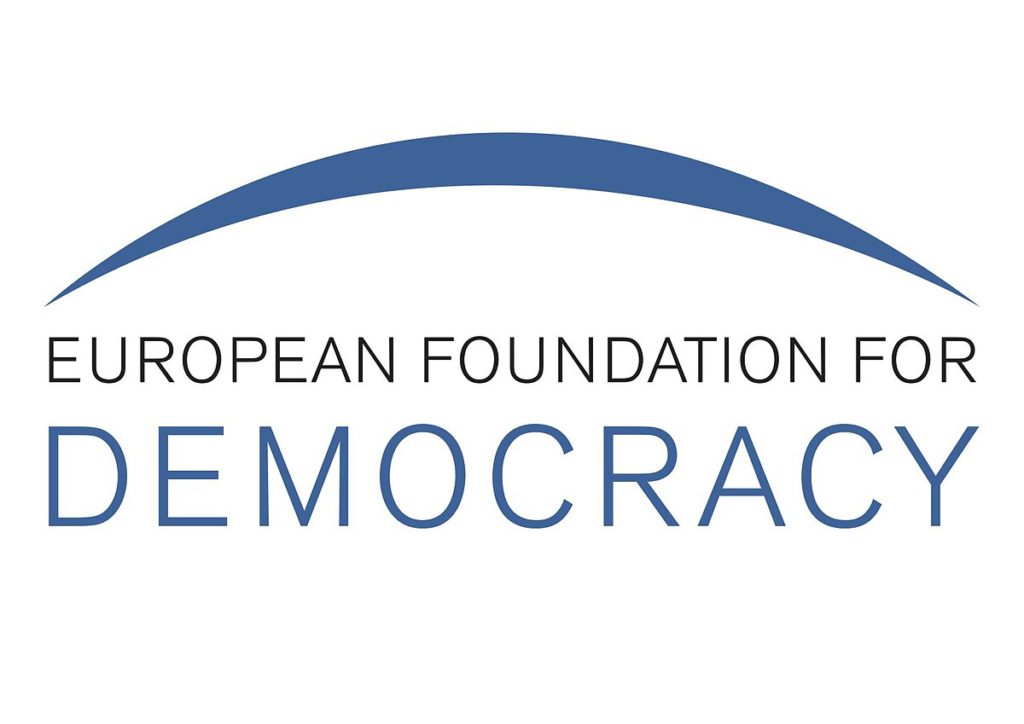This travelling exhibition has already captivated audiences in Ottawa, Paris, London and Jakarta. I am delighted that the European Foundation for Democracy and the EU-Mission of Afghanistan picked the Press Club Europe in Brussels – a place at the heart of Europe where news constantly happens – to host this exhibition. I am also very pleased that one of the curators of this exhibition, Ms Samad, as well as the Afghan Ambassador to the EU and Belgium, H.E. Homayoun Tandar, are among us today.
Speaking to you tonight, I raise the question: what do we in Europe actually know about the 14.5 million women who live in the Islamic Republic of Afghanistan today?
When we hear news about Afghanistan, we usually hear grim news about violence, war and bombings. But do we actually hear other stories? What do we know about Afghan women's lives, their hopes and issues, their fears and aspirations?
Do we know about women like Anisa Sadat, whose father wanted her to become a lawyer, but who then decided to pursue her dream of becoming a reporter and who now studies at the Journalism Department of Kabul University?
This exhibition shows us all these self-determined women who have achieved what they have been striving for. They are the living proof that the image that we often have – an Afghan women covered in a blue burqa suffering from male oppression – might be deceiving. Did you know that women are not forced to wear the burqa in post-Taliban Afghanistan anymore?
And what about Afghan women in politics? Do we read stories about Sharifa Zurmati Wardak who won a seat in the 2005 Parliament elections along with 67 other women? Wardak won her mandate in one of the most conservative regions of Afghanistan, the south-eastern province of Paktia.
Again, it is the "Voices on the Rise exhibition" that opens our eyes: Afghan women are not voiceless victims of male politics, war and aggression. On the contrary, there are many politically active women in Afghanistan who can and will shape politics in their country.
The moment of surprise
I am raising these questions and pointing out these stories as a former journalist. Tonight I am not writing an article. I am not making the news. But I have put myself into investigative mode. Seeing the photos portraying Anisa Sadat, Sharifa Zurmati Wardak and 42 other women today has increased my knowledge and my understanding of Afghan women. This exhibition has opened my eyes – and it has caught me by surprise.
I felt the same moment of surprise this spring when I saw on TV women and men marching hand in hand on Tahrir Square in Cairo, when I heard women in Bahrain and Yemen shouting slogans for equality and women's rights. And again I felt this moment of surprise when I learned that it was a young woman who led the protests in Egypt. 26-year-old Asmaa Mahfouz became the face of the Revolution after she had posted a video on Facebook that went viral across Egypt within a few days. In this video, Asmaa Mahfouz had the courage to reveal her full identity. She forcefully told everybody to point the protests at Tahrir Square and to demand justice. As EU Justice Commissioner, I am also responsible for gender equality, so I want to stress that I strongly support these marches for fundamental and equal rights.
Many women are raising their voices in the Arab world and this spring. They are determined to stand up and to speak out. This is what we saw over the last few months, and this is what we see in the photo exhibition today. These voices and pictures allow us to unveil – and to correct – the images and perceptions that we have of Afghanistan, in particular, and of the Arab world, in general. This is crucial if we want to understand each other better, if we successfully want to work together and if we want to engage in dialogue around the world.
The role of the media for women's self-empowerment
The media play a crucial role. We only get the real stories and the undistorted picture, when women have the opportunity to articulate themselves. They do not necessarily need a medium in the sense of a third party or a "mediator": Women can be the journalists themselves. I have been one of the first political female journalists in Luxembourg, so I know what I am talking about. We also see this in the Arab world, such as with the case of Asmaa Mahfouz in Egypt. She was an activist and, at the same time, her own documentarian, filming herself and making use of Facebook and YouTube. In Egypt, "new media" have helped women to self-empowerment. In Afghanistan things are not as simple. The internet penetration rate is lower than one percent, the literacy rate of women is at 12 percent. Freedom of expression and freedom of the media are granted by the Afghan Constitution, but local journalists and particularly female journalists are threatened by the Taliban. On some occasions Afghan women journalists pay for their activism with their lives.
In this regard it extremely impressive that there has been such a dynamic growth in Afghan media since the fall of the Taliban in 2001.
In Afghanistan there are an estimated 600 print publications, at least 100 radio stations and nearly 20 TV stations. Courageous women are now holding the pen, microphone and camera. And we can see these courageous women in the exhibition tonight. They are raising their voice and they are making the news. Afghan women and a modern Afghanistan are actually on the rise.

